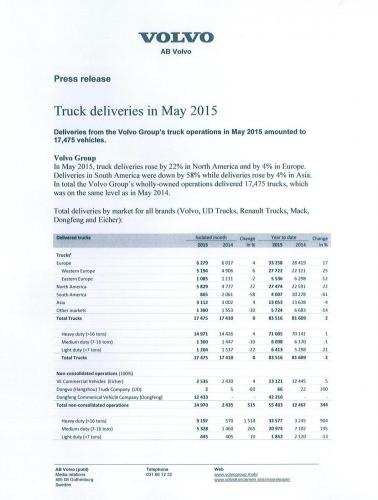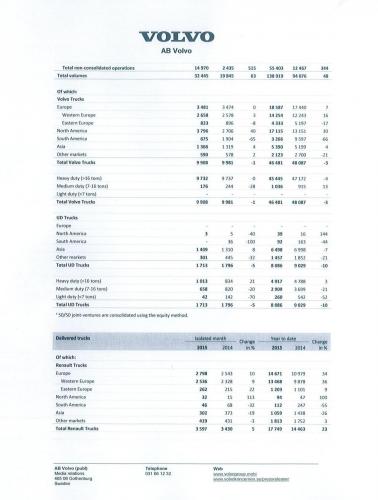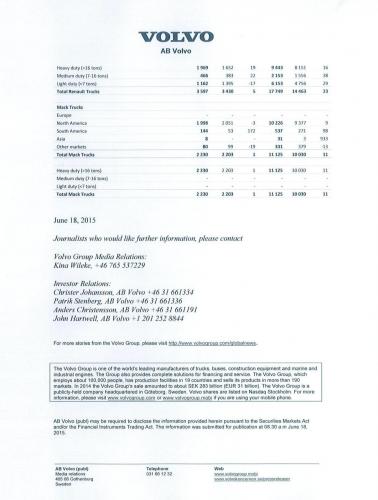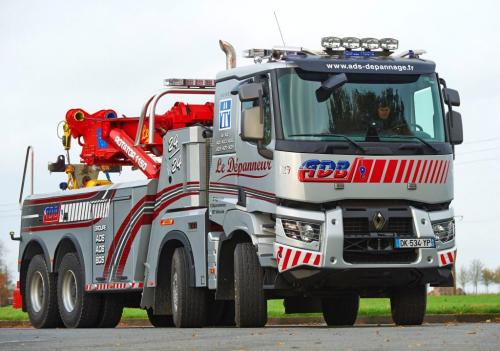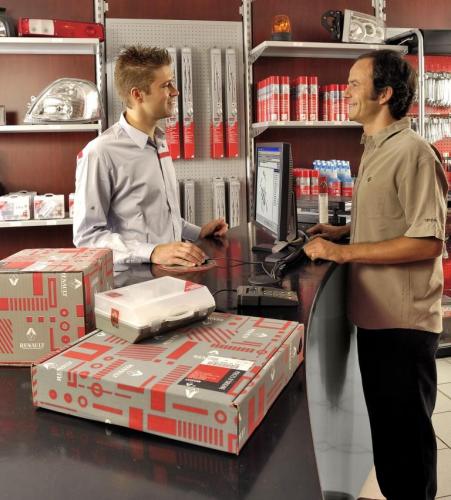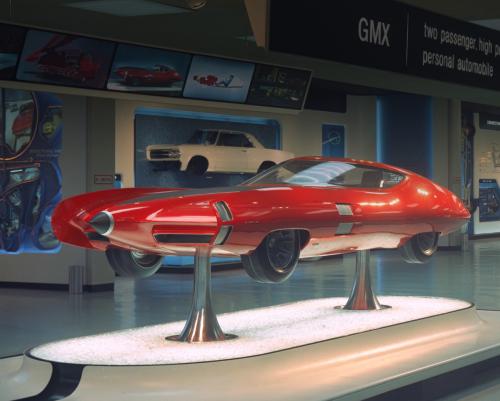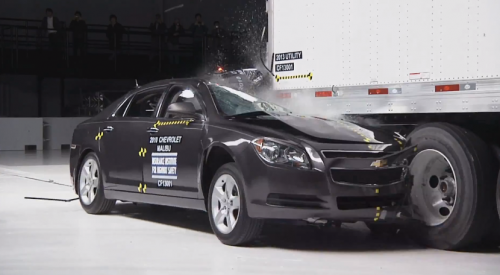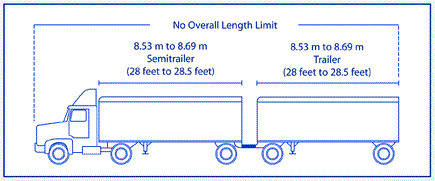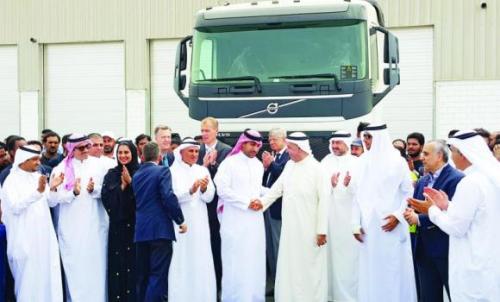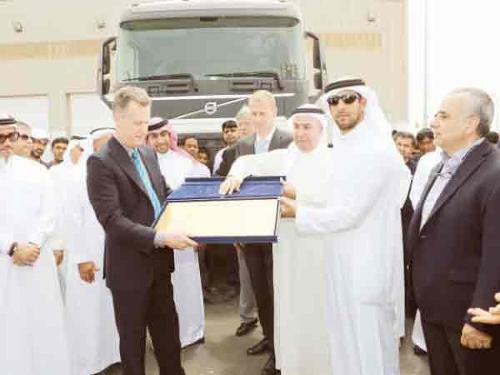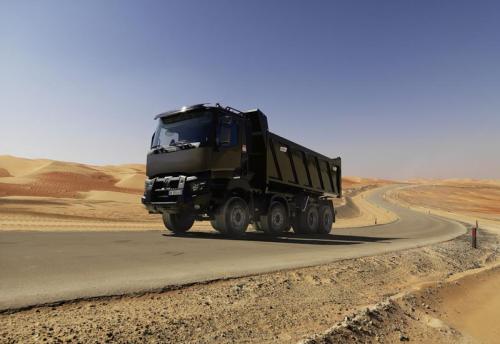
kscarbel2
Moderator-
Posts
18,539 -
Joined
-
Days Won
112
Content Type
Profiles
Forums
Gallery
Events
Blogs
BMT Wiki
Collections
Store
Everything posted by kscarbel2
-
Ford Truck targets Middle East bound long-distance fleets
kscarbel2 replied to kscarbel2's topic in Trucking News
Great link......thank you. You're right, those lads were real drivers. -
Motor Malaysia / June 18, 2015 American company Zero Motorcycles (http://www.zeromotorcycles.com/fleet/) now has more than 50 US police departments using its electric motorcycles. “This is a milestone for us, as more agencies embrace the benefits of Zero Motorcycles,” said Kevin Hartman, North American fleet sales director for Zero in a statement. “When compared to traditional police motorcycles, our patrol bikes have a lower total cost of ownership, are easier to maintain and – with minimal noise and no exhaust – are a vehicle for good community relations.” They also make it easier to nab the bad guys in the act. “This motorcycle is so quiet that we continuously sneak up on…..suspects while out on patrol,” Officer Steve Carbajal of the Los Angeles Police Department’s Off-Road Unit said. Video - https://www.youtube.com/watch?v=R0QoGKk5YPE#t=57
-
MAN eyes 2,000 job cuts in parent VW Group-led trucks revamp
kscarbel2 replied to kscarbel2's topic in Trucking News
Agreed, MAN produces a first-rate heavy truck. But it's expensive, like Mercedes-Benz, because of the high costs of German labor (double that of U.S.) thanks to the works councils (union), and the higher-than-the-global-norm number of employees at its German plants. This is alike why the VW brand is barely breaking even while Toyota and Hyundai see 8 to 9 percent margins. -
Frankly speaking, I think most of us have tossed "good faith" in our country's management team to the curb and come to the realization that government more often than not acts in the interests of big business. Look at NAFTA. The sales pitch to the gullible masses was a complete fabrication, a brilliantly played out distraction from the truth. NAFTA was the idea of big business, a way for them to produce in low-labor-cost Mexico, and then import to the US without tariffs (which would otherwise evaporate the labor savings). I can appreciate US companies searching for a solution to rising US labor costs. But the government should have crafted a solution that kept production in America. Look at the costs of benefits to companies, eg. health insurance. The health care and pharmaceutical industries are two of the biggest scams of our lifetime. An MRI in overseas countries on a new General Electric machine costs US$75, but you pay $2000 to $3000 in America, and thus have stratospheric insurance premiums. Why doesn't the government serve the people and address this deplorable situation? Again, because it has the interests of big business (the highest bidder) at heart. It's all an extremely sad situation. As Nardelli said in the video, it makes no sense for Ford to dilute itself by merging with Chrysler. As for GM, I personally can imagine a merger with specifically the Chrysler unit of FCA (Fiat Chrysler Automobile..........the near bankrupt Fiat is not part of my equation. In the commercial truck segment, Dodge's RAM 3500/4500/5500 are selling well to a majority of Americans, people who would never consider a Dodge in the old days. In the car side, Chrysler overall is weak. So if you combine: GM Colorado/Canyon + Silverado 1500/2500 Dodge commercially oriented 3500/4500/5500 (FAR more suitable for the US than Isuzu low cab forward N-series trucks) The full size range of GM automobiles Chrysler performance halo cars I can imagine an optimized blend of product.
-
Trucking Execs Urge Senators to Turn Down ‘Twin 33’ Trailers
kscarbel2 replied to kscarbel2's topic in Trucking News
It's all about politics and investor profits.........rather than what's best for America. -
MAN eyes 2,000 job cuts in parent VW Group-led trucks revamp
kscarbel2 replied to kscarbel2's topic in Trucking News
Once Volkswagen Group puts you in their sights, they can always swing the funding. -
Volvo Group Global / Press Release / June 18, 2015 Deliveries from the Volvo Group’s truck operations in May 2015 amounted to 17,475 vehicles. In May 2015, truck deliveries rose by 22% in North America and by 4% in Europe. Deliveries in South America were down by 58% while deliveries rose by 4% in Asia. In total the Volvo Group’s wholly-owned operations delivered 17,475 trucks, which was on the same level as in May 2014. .
-
50 Years Back: GM's Futurama at the 1964 World’s Fair
kscarbel2 replied to kscarbel2's topic in Odds and Ends
BMT gas turbine-related threads: http://www.bigmacktrucks.com/index.php?/topic/31891-the-gas-turbine-general-motors-bison-iii/ http://www.bigmacktrucks.com/index.php?/topic/31898-the-gas-turbine-chevrolet-turbo-titan-iii/ http://www.bigmacktrucks.com/index.php?/topic/31951-the-gmc-astro-95-and-astro-ss-gas-turbine-tractors/ http://www.bigmacktrucks.com/index.php?/topic/32038-fords-futuristic-gas-turbine-big-red/ http://www.bigmacktrucks.com/index.php?/topic/32060-the-ford-w-1000-gas-turbine/ http://www.bigmacktrucks.com/index.php?/topic/31978-freightliners-turboliners/ http://www.bigmacktrucks.com/index.php?/topic/32139-the-turbostar-from-international/ http://www.bigmacktrucks.com/index.php?/topic/32014-the-gt-601-gas-turbine-powered-macks/ http://www.bigmacktrucks.com/index.php?/topic/36024-the-autocar-gas-turbine-coe/?hl=turbine http://www.bigmacktrucks.com/index.php?/topic/32110-where-was-cummins-during-the-gas-turbine-truck-race/ http://www.bigmacktrucks.com/index.php?/topic/31883-paul-berliet-and-his-t100s/ -
Transport Engineer / June 17, 2015 Brighton University and engineering innovation firm Libertine are claiming a ‘first’, with the demonstration of a commercially viable exhaust heat recovery system for trucks, running in test at 20kWe (27 horsepower). The project, which is part-funded by the UK government through Innovate UK, uses a pair of Libertine's linear free-piston expanders. They run in an ethanol rankine cycle and extract energy from a hot gas source which represents the flow of vehicle exhaust under steady-state conditions. Libertine chief exec Sam Cockerill (pictured) says the free piston expander system has several advantages over turbo-generator systems. Its operational flexibility and two-phase flow tolerance permits useful output to be generated during part load and transient conditions, he explains – pointing out that these represent the majority of drive cycle conditions. In addition, the system provides a larger single-stage expansion ratio, which suits ethanol/water rankine cycles. Libertine's piston geometry, electrical machine design and cylinder construction are particularly suited to rankine cycle applications, says Cockerill. By integrating the electrical machine into the cylinder wall, rather than attempting to isolate it with seals, the friction losses often encountered by free piston engine developers are dramatically reduced, he explains. Libertine's expander also uses a novel transfer valve arrangement to meter the high pressure working fluid into the expansion chamber without the need for active inlet valve control. This, says Cockerill, offers a simpler and more efficient solution than alternative inlet valve arrangements. Initial results from the trials will be published during Q3 this year, with completion of the tests scheduled for the year end. They are expected to confirm the system's potential to convert the high grade heat in vehicle exhausts into electrical power, which can contribute to either powertrain or auxiliary loads. By providing physical test results to validate simulation tools, the data will allow Libertine to model real vehicle applications with high confidence.
-
Renault Press Release / June 16, 2015 In order to provide its customers in France with the best maintenance management service for their vehicles, Renault Trucks is the only market player to guarantee all spare parts fitted in its network for two years and also cover all breakdown assistance and towing costs. Taking customer service to another level, Renault Trucks now guarantees its spare parts in France for two years when they have been fitted in the manufacturer’s network. “This 2 year guarantee is the most extensive on the French market since it includes breakdown assistance, towing and repairs for all vehicle ranges,” explains Bruno Morin, Director of Aftersales for Renault Trucks France. “With this new warranty and our network coverage, we provide our customers with a unique service in France when it comes to maintaining their vehicles’ mobility”. Renault Trucks is indeed the only brand on the French market to offer its customers a guarantee that also includes breakdown assistance. This “2 year” warranty, which also applies to the standard replacement (eXchange) offering, demonstrates the confidence Renault Trucks has in its products and its determination to offer services that match its customers’ needs as closely as possible. With over 325 sales and service outlets in France, the Renault Trucks network is the largest of its kind in the country. This dense coverage enables it to satisfy its customers’ demands in record time, wherever they may be in France. The Renault Trucks offering includes all the services designed to ensure vehicles’ maximum mobility. It covers services to reduce fuel consumption (Optifuel Solutions), fleet management (Optifleet), vehicle maintenance and repair (Start&Drive maintenance contracts, “all-inclusive” fixed price maintenance packages) and assistance (Renault Trucks 24/7). “By choosing the Renault Trucks network for their parts and maintenance operations, hauliers can be sure of benefiting from the best after-sales guarantee,” adds Bruno Morin. .
-
Centered in the middle of the 1964 World’s Fair in Flushing Meadows, New York, stands the “Unisphere,” a landmark designed to celebrate the beginning of the space age and a representation of worldwide progress. Around it, various global corporations set out to display their new products, innovations, as well as inventions fit for the future. One of those companies, General Motors, showed fair-goers their view of what the future held with the Futurama II, a second iteration of the 1939 World’s Fair’s Futurama I. The 8-1/2-acre site on the fairgrounds depicted a future that addressed problems with transportation and natural resources. Solutions like obtaining oil from the bottom of the ocean, drilling for ore in Antarctica, foresting with the use of lasers, and exploring the moon were just a few of the futuristic innovations displayed. Also available to fair-goers was GM’s “Avenue of Progress,” a more near-future look into the company’s innovations and inventions. Three new concept vehicles were on display: the Firebird IV, made to get people cross-country as fast as possible; the GM-X Stiletto, a high-speed, high-performance coupe for the ultimate gear-head; and finally the Runabout, an urban vehicle for the common shopper, complete with a shopping cart in the rear. Designed under the direction of Vice President William L. Mitchell, the vehicles were over 25 years in the making. The innovations displayed by GM at the World’s Fair weren’t limited to automobiles, however. Products like knock-free gas, a refrigerant gas, and new power sources ranging from diesels to gas turbines showed the future of power. In the healthcare industry, a centrifuge for the proper handling of Polio vaccines as well as a mechanical heart and lung machine showed the company’s drive to think – and create – outside the box. Fifty years after Futurama II wowed over 29 million people during its two years at the World’s Fair, General Motors continues to be at the forefront of pure and applied research. While the depiction of Futurama II isn’t entirely the world in which we live today, it is a strong statement of GM’s mission to constantly innovate. Related photographs - https://www.gmheritagecenter.com/featured/WorldsFair.html Note the GT300 gas turbine-powered turbocruiser municipal transit bus. I regret GM doesn't present any photos of the gas turbine Bison III heavy truck concept, presented at the show (http://www.bigmacktrucks.com/index.php?/topic/31891-the-gas-turbine-general-motors-bison-iii/). .
-
Reuters / June 17, 2015 Germany's MAN SE could cut as many as 2,000 jobs at its main trucks division as the Volkswagen-owned company slims operations under a wider reorganisation of production, company and union sources said. Management and union officials at MAN have been in talks for months on how to reshuffle truck production to achieve planned savings of more than 600 million euros ($676 million) by 2017 to make it more efficient as parent VW pushes to become a global force in trucks. VW, Europe's largest vehicle manufacturer, has spent billions of euros over the past decade on expanding stakes in MAN and Scania to fulfil a long-standing ambition to compete with truck market leaders Daimler and Volvo. But it has yet to reap significant cost savings from the combination and last month aligned MAN and Swedish peer Scania in a new truck holding company. The new strategy foresees abandoning truck production at MAN's plant in Salzgitter in northern Germany, where about 2,500 people are employed, and converting the site into a component factory, the sources said. Assembly of heavy trucks would be concentrated at the main factory in Munich, and light and medium-sized trucks would be built (at the former Steyr truck plant) in Steyr, Austria, they said. (http://www.corporate.man.eu/en/company/production/man-truck-and-bus/man-trucks_-vw-trucks/MAN-Trucks_-VW-Trucks.html) The reshuffle will entail heavy investment in MAN's truck-making facilities, company sources said, without being specific. MAN employs 15,000 workers in Germany, almost half its 34,000-strong global labour force. "The key question is: How can we better use our production capacities?" Markus Vogl, works council chief at MAN Truck & Bus's Austrian operations, told Reuters. "We have more capacity than we currently need. The question is how to position ourselves sensibly." The talks between MAN's management and union representatives are ongoing and will probably conclude next week, one of the labour sources said. MAN and parent VW declined comment. Management and union representatives aren't seeking outright job losses, both company and union sources said. Instead, the headcount could be lowered through voluntary redundancy, early retirement as well as reassigning staff to other roles within VW, they said. MAN, which VW fully integrated into its multi-brand group in 2013, has long suffered from languishing profitability and high fixed costs. "VW must become faster, more flexible and nimble," Chief Executive Martin Winterkorn told a staff gathering at Wolfsburg headquarters on Wednesday. "We are trying to get better in all areas where we are still underperforming." Andreas Renschler, head of VW's new truck holding company, wants to boost the operating margin at MAN's truck operations to at least 6 percent, from 1.8 percent in 2014, Germany's Manager Magazin reported on Wednesday, citing sources. ($1 = 0.8876 euros)
-
Commercial Carrier Journal (CCJ) / June 17, 2015 Rulemaking to consider requirements for rear impact guards and other safety strategies on single unit trucks has reached the next stage. A separate rulemaking to require the guards on trailers and semi-trailers, however, is running slightly behind its single-unit counterpart. On June 12, the White House Office of Management and Budget received the National Highway Traffic Safety Administration’s proposal to require devices to mitigate rear-end underride crashes of single unit trucks. Last July, NHTSA said it would issue an Advanced Notice of Proposed Rulemaking for rear impact guards for single unit trucks and a Notice of Proposed Rulemaking for the guards on trailers and semi-trailers. The agency began the efforts last year after the Truck Safety Coalition petitioned to have all trucks and trailers equipped with energy-absorbing rear impact or underride guards guards. These would be mounted lower to the ground — 16 inches — with vertical supports spaced farther apart — 8 inches from the side edges. The coalition says these guards would effectively protect car occupants from death and injury in rear impact crashes. .
-
i4u News / June 17, 2015 Samsung has introduced a safety solution for greater roadway safety. The Samsung Safety Truck concept equips big rigs with a giant screen in the back displaying what happens in front of the truck transmitted by wireless cameras mounted in the front. The big rig becomes "invisible" and cars behind it see when it is save to overtake. Advertising company Leo Burnett in Buenos Aires created the initiative "The Safety Truck" for Samsung's Argentinian corporate office to promote road safety. The idea roots in the extreme high road casualties in Argentina. According to Samsung almost one person dies every hour in a traffic accident. 80% of these accidents happen on roads mainly from drivers trying to overtake. Every car driver knows how difficult it is to overtake a big truck on the road. It is frustrating. The Samsung Safety Truck making overtaking easier and safer. Another concept is to transmit the signal of the truck's front-mounted video cameras via Wi-Fi to the entertainment system in cars. Drivers could then see on the screen if oncoming traffic existed ahead of the truck.
-
Heavy Duty Trucking / June 16, 2015 he top executives of 15 major for-hire carriers are pushing back against a drive on Capitol Hill to legalize the operation of twin 33-ft trailers on highways nationwide. In a succinct letter addressed to Chairman Thad Cochran (R-MS) and Vice Chairman Barbara Mikulski (D-MD) of the Senate Committee on Appropriations, the heads of 13 truckload and 2 LTL carriers urge committee members to oppose an amendment to the next transportation funding bill that “would force states to accept double 33’ [vs. the current 28’] trailers on all U.S. highways” because it is fraught with “unintended consequences.” The signatories argue that permitting the longer sets of doubles “would have a negative impact on highway safety, accelerate wear and tear on the nation’s highway system, and make it very difficult for small trucking companies, which are the heart of our industry, to compete.” Noting that trucking itself is “deeply divided on this issue,” they contend that the amendment has not yet been sufficiently discussed on Capitol Hill. Nonetheless, an identical measure has made it through the House unscathed. But President Obama has already threatened to veto the funding package if it makes it to his desk in the same form that it took in the House. To help make their case against twin 33s, the writers also point out that the comprehensive size/weight study recently put out by the Dept. of Transportation “concluded that no changes in the relevant truck size and weight laws should be considered at this time.” The authors close by advsing the Senators that they “would be happy to personally visit with you and your colleagues further, on the reasons why this amendment should not be adopted.” The signatories of the letter are: Paul Will, CEO, Celadon Trucking, Indianapolis, INDon Orr, president, Central Transport, Waco, TXDavid Parker, president & CEO, Covenant Transport, Chattanooga, TNTonn Ostergard, president & CEO, Crete Carrier Corp., Lincoln, NBReggie Dupre, CEO, Dupre Logistics, Lafayette, LASteve Gordon, president, Gordon Trucking, Pacific, WAMike Gerdin, chairman & CEO, Heartland Express, North Liberty, IAJohn N. Roberts, president & CEO, JB Hunt Transport, Lowell, ARJim Richards, president & CEO, KLLM Transport, Jackson, MSKevin Knight, chairman, Knight Transportation, Phoenix, AZCharles Hammel, president, Pitt Ohio, Pittsburgh, PADan Cushman, president & CEO, PAM Transport, Tontitown, ARDavid Daniels, president & CEO, May Trucking Co., Salem, ORJerry Moyes, founder & CEO, Swift Transportation, Phoenix, AZRobert A. Peiser, chairman, USA Truck, Van Buren, AR.
-
Automotive News / June 17, 2015 The European Commission has fined Germany's Eberspaecher Group 68 million euros (US$76.6 million) after finding Eberspaecher and fellow supplier Webasto had fixed prices of heating systems in cars and commercial trucks. The Commission said the two suppliers had coordinated prices of fuel-operated parking heaters for parked vehicles and auxiliary heaters for 10 years from 2001. Webasto avoided a potential fine of 222 million euros (US$252 million) because it revealed the existence of the cartel. Eberspaecher benefited from reductions due to its cooperation with the investigation and its agreement to settle with the Commission. "For over 10 years, the only two suppliers of parking heaters in Europe colluded to avoid competing with each other. This cozy arrangement adversely affected a major part of the European automotive industry and ultimately those who buy cars and trucks," European Competition Commissioner Margrethe Vestager said in a statement. The Commission said that when the companies received requests for price quotations from car or truck manufacturers, they discussed various price elements, agreed which of the two would submit the winning lower bid, and exchanged other commercially sensitive information. "The two companies also colluded when selling to dealers in Germany and Austria, for example by harmonizing their annual price lists and the discounts they would give to these dealers," the Commission said.
-
Car & Driver / June 17, 2015 http://blog.caranddriver.com/this-king-of-classic-ford-muscle-cars-looks-to-fetch-nearly-half-a-million-dollars/#more-222266
-
http://gmauthority.com/blog/2015/06/lingenfelter-works-their-lta-magic-on-a-2015-camaro-z28-video/ http://gmauthority.com/blog/2014/09/1968-pontiac-firebird-battles-camaro-based-lingenfelter-ta-video/
-
BUILT FOR THE LOAD - POWERED FOR THE PULL https://www.gmheritagecenter.com/docs/gm-heritage-archive/historical-brochures/Chevrolet_History/Chevrolet_Trucks.pdf
-
Arab News / June 17, 2015 (JEDDAH) Arabian Vehicles & Trucks Industry Ltd. (AVI), a joint venture between Zahid Tractor & Heavy Machinery Co. Ltd and Volvo Truck Corporation, has commenced production at its new facility located in the Industrial Valley of King Abdullah Economic City (KAEC). The Volvo truck that rolled off the AVI assembly line on Monday became the first truck of any kind to be assembled in KAEC. AVI's state-of-the-art facility was designed by a Volvo/Renault Trucks project team comprising engineers and process owners from both brands. Implementing a new concept for an efficient and cost-effective truck assembly, the AVI facility will be one of the first in the world to assemble both Volvo and Renault trucks on the same line. "This is a memorable day indeed in AVI's long and rich history. The new AVI facility represents a significant breakthrough in the diversification of Saudi Arabia's industrial capabilities and highlights Zahid Group's role as a leading B2B group in the Kingdom," said Wafaa Zawawi, chairman of the Board of Managers of AVI. "This facility also underlines Zahid Group's commitment to developing local talent by providing employment, training and growth opportunities for the Saudi youth. With a current Saudization rate in excess of 30 percent, further employment opportunities for Saudi nationals will arise as the plant increases production to meet local demand." Zawawi said the working environment in AVI is excellent, and he expects the new facility with its well-crafted, ergonomic design to enhance this. "The decision to relocate the AVI facility from Jeddah to KAEC was driven by KAEC's ability to provide a business-friendly environment, strong governance and fast-track employment opportunities," Zawawi stated. "All of these facets of KAEC will be essential in running AVI's large scale plant efficiently." Fahd Al-Rasheed, managing director and Group CEO of King Abdullah Economic City, said, "This is also a great day for KAEC since the start of production at AVI's assembly plant truly fulfills the original concept of King Abdullah Economic City as a key driver in Saudi Arabia's diversification into nonoil sectors, providing alternative sources of revenue and reducing reliance on imports. We are happy to see the first Volvo truck roll out from the assembly line, and share AVI's pride that Saudi nationals are an integral part of this great achievement, giving full credence to the words 'Made in Saudi Arabia'." Anders Olausson, vice president of Volvo Global Manufacturing and AVI Board Member, said, "We believe King Abdullah Economic City augers well for the future of the Kingdom in that it combines a modern infrastructure and a professional work environment with attractive living. Equally important, KAEC's location on the Red Sea is a strategic advantage for AVI. The close proximity to the new sea port and road access to the rest of the Kingdom are essential for serving our specific local and regional markets with great efficiency." Olausson stated that the principles followed in designing the production processes and the general layout of the new AVI facility were derived from the Volvo Production System, which utilizes "Lean Manufacturing" principles. He went on to explain that various "Lean Tools" would be applied in assembling the most sophisticated trucks in Saudi Arabia, thereby ensuring both quality and zero defects for customers. The new facility is fully air-conditioned and has been ergonomically designed. Tooling, fixtures, equipment, drive line, crane structure, special racking on the assembly line, ergonomically proven tightening tools, and different lifting and moving fixtures help keep the facility running at optimum performance. AVI is a member of Zahid Group, representing a diverse range of companies, strategic partnerships, and world-renowned brands. Headquartered in Jeddah, Saudi Arabia, the group is in its 5th generation of leadership under an established family whose commercial roots date back over a century. .
-
Construction Week / June 16, 2015 Volvo Group subsidiary Renault Trucks has announced its exclusive Iraq partnership with Sunflower General Trading Company – a truck distributor and business partner of the State Company for Automotive Industry (SCAI). The deal, which designates Sunflower the sole distributor for Renault trucks in Iraq, excluding Kurdistan, highlights the French OEMs ongoing efforts into the country’s heavy-duty industry sector following the opening of a production plant for its C,K and D ranges in Iraq in 2013. Accompanying the deal is news that Reanult has announced a 1,000m2 service centre and workshop to service the estimated 2,500 Renault Trucks already in Iraq – scheduled to be open for business in the first quarter of 2016. The landmark agreement was signed at the headquarters of Renault Trucks in St Priest, France, by Sunflower CEO, Abbas Jasim Mohammed Al Dabbas, and the president of Renault Trucks, Bruno Blin. Bernard Amiel, business team director of Renault Trucks Iraq, added: “Renault Trucks is a trusted brand in Iraq, and our partnership with Sunflower Company will only strengthen our position. “Our goal is to continue improving the service and transport solutions that we offer our Iraqi customers and ensure that they receive the best possible after sales support.” Renault Trucks has been present in the Middle East and Africa region for over 40 years. .
-
Land Line / June 16, 2015 A new law in Nevada permits the state highway department to bump the speed limit by 5 mph on certain stretches of road. Gov. Brian Sandoval signed into law a bill to authorize 80 mph speeds for all vehicles on stretches of highway deemed appropriate by the Nevada Department of Transportation – up from 75 mph. Sen. Don Gustavson, R-Sparks, has said the change would reflect the top speeds in neighboring Utah and Idaho. Critics said that increasing the speed limit by 5 mph would likely result in travelers driving in excess of 85 mph. Gustavson refutes that claim. He said he believes the bump in the speed limit can be made without drivers abusing the new speed. The former truck driver has cited research collected in Utah. Utah law authorizes 80 mph speeds on rural stretches of interstates and limited-access highways throughout the state. Addressing concerns about higher speeds, Utah officials have noted that 85 percent of drivers on a test section of I-15 posted at 80 mph since 2009 now drive 83 mph – up from 82 mph before the change. Truckers have voiced concern that higher speed limits result in a wider disparity between the posted speed and how fast many speed-limited trucks can travel. The Owner-Operator Independent Drivers Association says that roadways are safer when all vehicles are permitted to travel at the same rate of speed. Mike Matousek, OOIDA director of state legislative affairs, has said that differential speed limits create more interactions between cars and trucks, which can potentially lead to an increase in the number and severity of accidents. Gustavson shares the same view about keeping car and truck speeds the same. “The safest policy is one that provides for uniformity in speeds.” The state DOT could make the switch in posted speeds starting Oct. 1.
-
Trailer/Body Builders / June 16, 2015 Long-time dump body manufacturer Ox Bodies has introduced the Trail Ox series of end-dump trailers, designed for a range of hauling applications, including sand-to-large aggregates, riprap and asphalt. http://www.oxbodies.com/ox-end-dump-trailers.html A variety of configurations and options are offered to meet specific hauling needs. The product line comes in full-frame and quarter-frame versions. The heavy-duty full frame is targeted for demanding applications, while the lighter weight quarter frame is ideal for mid-range haul distances. Trailers feature a width of 96 inches, side heights of 36 to 60 inches, lengths of 22 to 36 feet, and capacities up to 51.2 cubic yards. All trailers have a continuous seam-welded design that reduces debris collection and water-related body and chassis corrosion. In addition to a wide range of high-end features, numerous product-enhancing upgrades are also available. Trail Ox trailers are backed by a two-year warranty.
BigMackTrucks.com
BigMackTrucks.com is a support forum for antique, classic and modern Mack Trucks! The forum is owned and maintained by Watt's Truck Center, Inc. an independent, full service Mack dealer. The forums are not affiliated with Mack Trucks, Inc.
Our Vendors and Advertisers
Thank you for your support!



